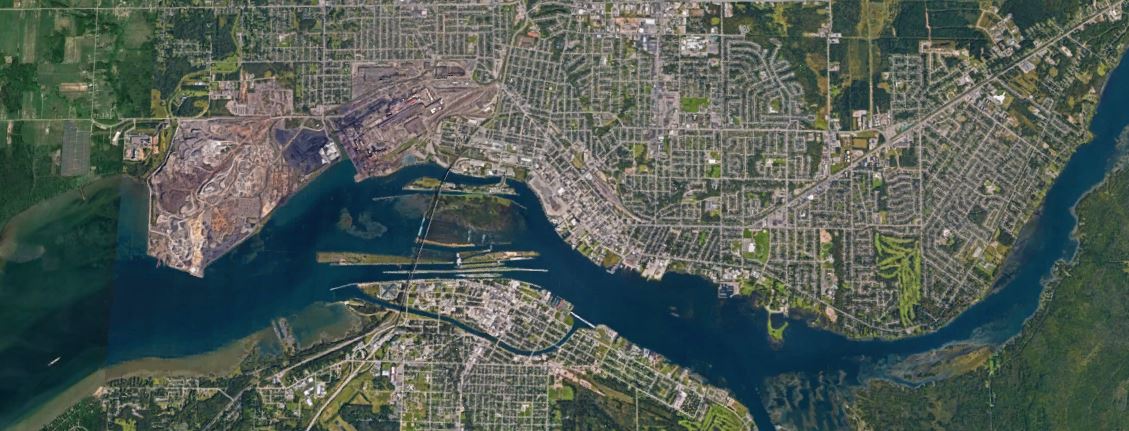SAULT STE MARIE
The City of Sault Sainte Marie was "founded" by the French in 1668 and incorporated as a town in 1887 and as a city in 1912, Sault Ste Marie is built on the traditional territory of the Ojibwe, who called the site Bawating (“place of the rapids”) and valued it for its access to the upper Great Lakes and as a source of abundant whitefish and maple sugar. It is popularly called “the Sault,” or “Soo.”
STEELTON (aka. "STEEL TOWN")
The Town of Steelton, located north of Cathcart Street and west of North Street, in the vicinity surrounding the Algoma Steel Corporation was incorporated in April of 1904. Steelton, and its 7,000 residents, as a result of an earlier plebiscite, were absorbed by the city of Sault Ste. Marie on January 1, 1918.
ALGOMA STEEL INC (ASI)
(AKA "THE PLANT")
(AKA "THE PLANT")
In February of 1901, Algoma Steel's founding father, Francis Clergue, started the construction of the Algoma Iron, Nickel and Steel Company (now ASI). It took almost a year to the day to complete construction of two small blast furnaces, a 600 ton Bessemer furnace, a 23- inch bloom rolling mill and rail mill.
In May 1905 the # 1 Blast Furnace (the largest charcoal blast furnace ever built) was commissioned. It established a world production record of 173 tons of pig iron in a 24 hour period.
In 1975, Algoma’s # 7 blast furnace went into operation (replacing #3 and #4).
Algoma Steel underwent restructuring in 1992 and again in 2002.
In June 2007, Algoma was acquired by Essar Steel Holdings Ltd. (a division of the multi-national conglomerate Essar Global) and became Essar Steel.
In December 2018, Algoma Steel Inc.(ASI) emerged from bankruptcy as a totally new private company.
On March 23, 2021, ASI formed a merger with Legato Corp. to become Algoma Steel Group, Inc.
In October 2021 the company was listed for public trading under the ticker symbol ASTL.
The company announced plans to transition to EAF steel-making and the eventual shutdown of #7 blast furnace and the 3 coke-oven batteries by 2030.
In May 1905 the # 1 Blast Furnace (the largest charcoal blast furnace ever built) was commissioned. It established a world production record of 173 tons of pig iron in a 24 hour period.
In 1975, Algoma’s # 7 blast furnace went into operation (replacing #3 and #4).
Algoma Steel underwent restructuring in 1992 and again in 2002.
In June 2007, Algoma was acquired by Essar Steel Holdings Ltd. (a division of the multi-national conglomerate Essar Global) and became Essar Steel.
In December 2018, Algoma Steel Inc.(ASI) emerged from bankruptcy as a totally new private company.
On March 23, 2021, ASI formed a merger with Legato Corp. to become Algoma Steel Group, Inc.
In October 2021 the company was listed for public trading under the ticker symbol ASTL.
The company announced plans to transition to EAF steel-making and the eventual shutdown of #7 blast furnace and the 3 coke-oven batteries by 2030.




